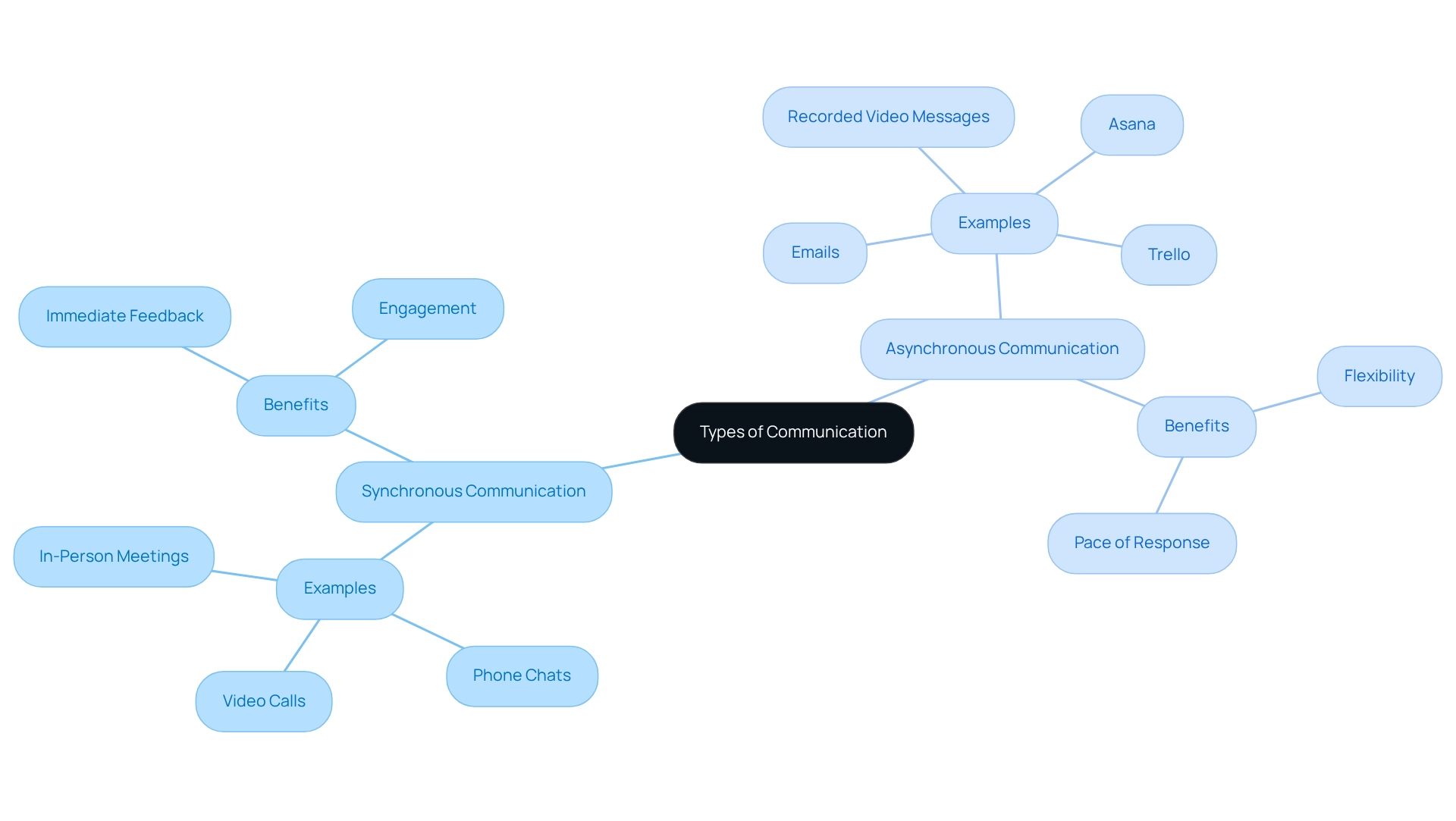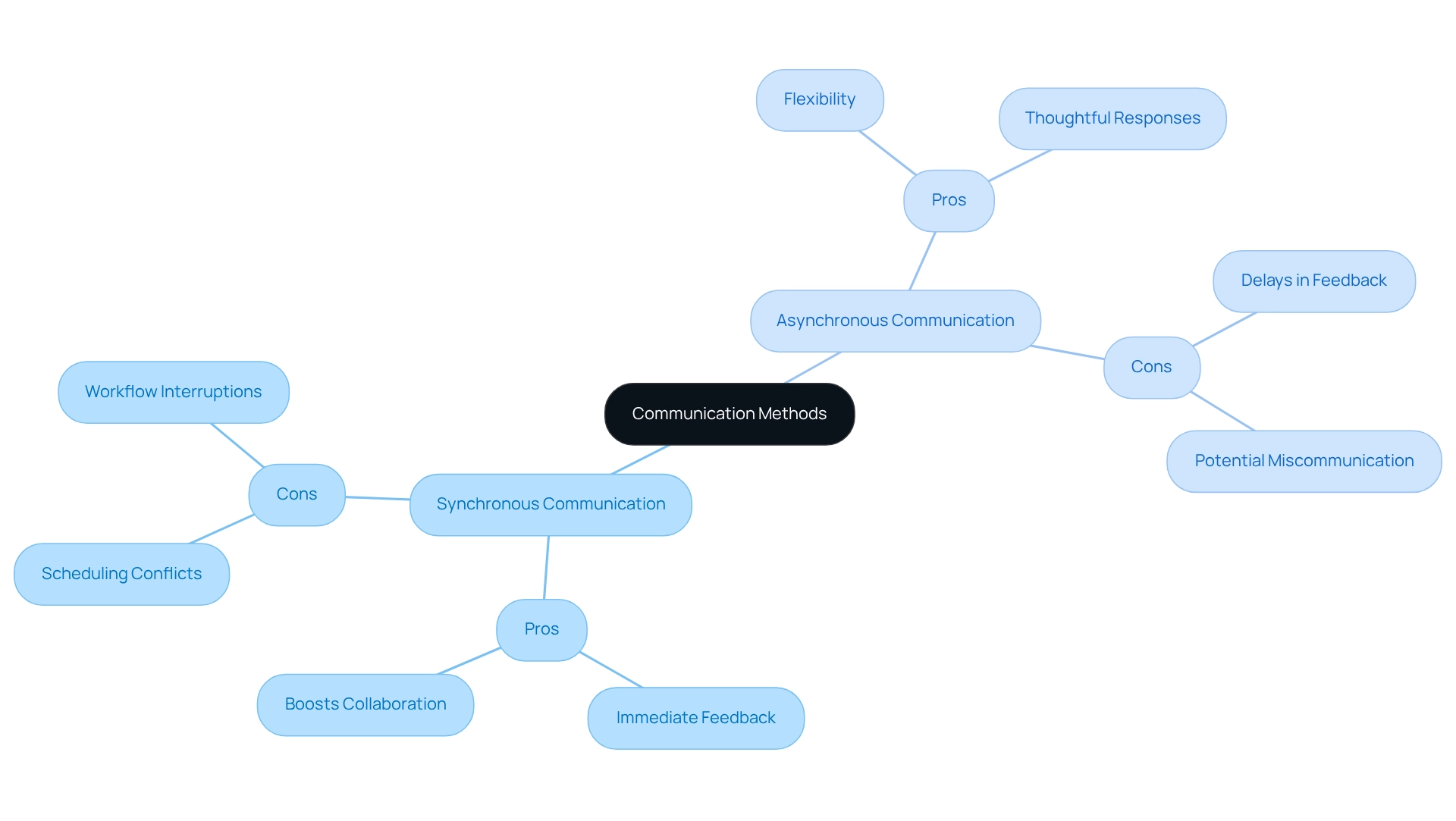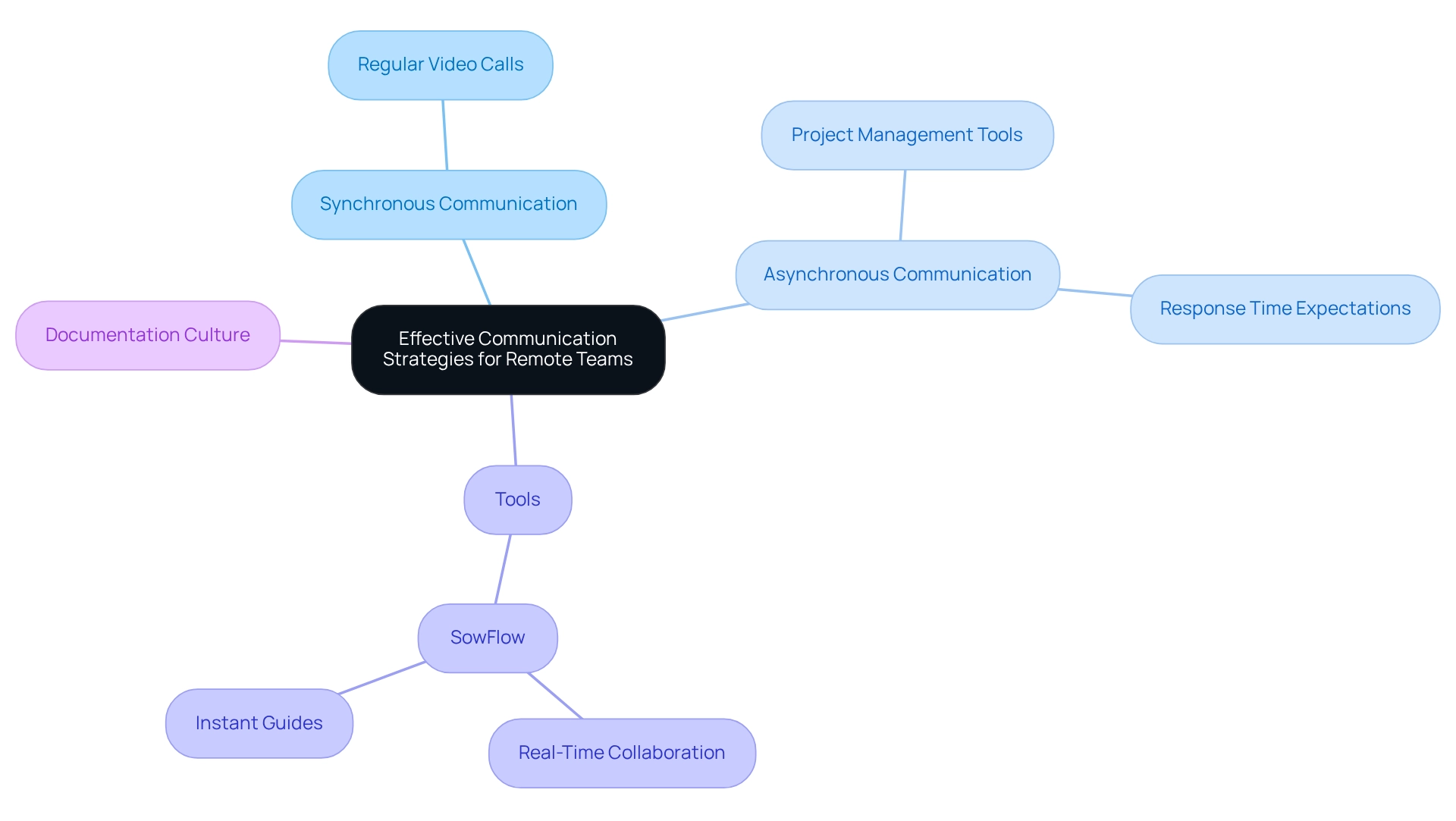
Remote Team Documentation Strategies
|
May 16, 2025
|
Synchronous vs Asynchronous Communication: Key Differences and Use Cases
Overview
You might be wondering what the real difference is between synchronous and asynchronous communication. Well, it all boils down to timing and how each method has its own perks and challenges.
With synchronous communication, you get that real-time engagement and immediate feedback—perfect for those urgent matters or when your team needs to collaborate quickly.
On the flip side, asynchronous communication gives you the flexibility to think things through and respond thoughtfully, which is especially handy in remote settings.
The article dives into specific use cases for each method, showing that while synchronous is great for immediate needs, asynchronous shines when updates don’t require a quick reply.
So, which one will you choose for your next conversation?
Key Highlights:
- Synchronous communication involves real-time interactions, such as video calls and meetings, allowing for immediate feedback.
- Asynchronous communication allows for messages to be sent and received at different times, such as emails and project management tools, providing flexibility.
- Pros of synchronous communication include quick decision-making and enhanced collaboration, while cons include potential scheduling conflicts and workflow interruptions.
- Asynchronous communication allows for thoughtful responses but can lead to delays in feedback and miscommunication.
- Best use cases for synchronous communication include crisis management and urgent updates, while asynchronous communication is ideal for updates that don't require immediate responses.
- Implementing effective communication strategies for remote teams involves setting guidelines for when to use each type and utilizing tools like SowFlow for documentation and collaboration.
Introduction
In a world where teams are more spread out and relying on digital communication, you might be wondering about the differences between synchronous and asynchronous interactions. Understanding these nuances is key for effective collaboration. Synchronous communication, which happens in real-time, allows for immediate feedback and lively discussions—perfect for urgent matters. On the flip side, asynchronous communication gives you the freedom to respond when it suits you, making it ideal for those complex discussions that benefit from a bit of thought.
Now, let’s dive into the strengths and weaknesses of both communication methods. We’ll explore their best use cases and share some actionable strategies to help optimize communication in remote teams. Ultimately, this will enhance efficiency and clarity in your workplace. So, stick around as we unpack this essential topic together!
Define Synchronous and Asynchronous Communication
You might be wondering what synchronous interaction is all about. Well, it’s all about those real-time exchanges where everyone is present at the same time—think video calls, phone chats, or good old in-person meetings. This method really thrives on immediate feedback and engagement, making it perfect for discussions that need quick responses.
Now, let’s flip the script—non-simultaneous interaction doesn’t require everyone to be on the same page at the same time. Messages can be sent and received whenever, like with emails, recorded video messages, or tools like Trello and Asana. This flexibility is fantastic because it lets folks respond at their own pace, which is great for those not-so-urgent matters.
Speaking of solutions, here’s where SowFlow comes in. Their instant documentation tool is a game changer for operations managers, tackling the everyday challenges they face. Imagine being able to share workflows in just seconds! This means everyone has quick access to the right documents, making interactions smoother in terms of synchronous vs asynchronous communication. By streamlining process standardization and enhancing onboarding and knowledge sharing, SowFlow really boosts team efficiency, letting operations managers focus on what they do best.

Evaluate Pros and Cons of Each Communication Method
You might be wondering about the differences in synchronous vs asynchronous communication, right? In the context of synchronous vs asynchronous communication, synchronous interaction offers immediate feedback, which can really boost collaboration and help teams make quick decisions.
- It’s especially handy for urgent matters and brainstorming sessions where chatting in real-time makes a big difference.
- But, let’s be real—it can also lead to scheduling conflicts and interrupt workflows, which might stress your team out a bit.
Now, on the flip side, the discussion of synchronous vs asynchronous communication emphasizes that asynchronous interaction is all about flexibility.
- It allows for thoughtful responses, making it perfect for those complex discussions that need a little more reflection.
- However, it does come with its own set of challenges, like delays in feedback and potential miscommunication because you can’t clarify things right away.
So, which one do you think works best for your team? Let’s explore these options together!

Identify Best Use Cases for Synchronous and Asynchronous Communication
You might be wondering when to use synchronous versus non-simultaneous interaction. Well, when discussing synchronous vs asynchronous communication, synchronous interaction really shines in situations that call for quick engagement—think crisis management, urgent project update meetings, or onboarding sessions where real-time feedback is key.
On the flip side, in the context of synchronous vs asynchronous communication, non-simultaneous interaction is perfect for tasks that don’t require immediate responses. For example, you can:
- Share project updates via email
- Hold non-simultaneous stand-ups in Slack
- Collaborate on documents in Google Docs
This approach is especially helpful for teams spread across different time zones, allowing everyone to contribute without the pressure of being online at the same time.
So, which method do you think would work best for your team?

Implement Effective Communication Strategies for Remote Teams
You might be wondering how to implement effective communication strategies for your remote group. Well, it all starts with setting clear guidelines on when to use synchronous vs asynchronous communication. For instance, regular video calls for group check-ins can really help everyone feel connected. On the flip side, using project management tools for updates can simplify your workflows and improve documentation practices.
Speaking of tools, SowFlow's user-friendly features can make it super easy to create instant guides. This way, important discussions are recorded and shared effectively. Plus, attributes like real-time collaboration and easy access to documentation really boost knowledge management, making updates a breeze for everyone involved, particularly when examining synchronous vs asynchronous communication and establishing expectations for response times in asynchronous exchanges. This can help manage your team's workloads and ease any anxiety about communication delays. And don’t forget about fostering a culture of documentation! When all participants have access to improved knowledge management resources, clarity improves, and everyone stays aligned.
If you're curious about how SowFlow can support your team's communication and documentation needs, why not reach out to us today? We're here to help you navigate these challenges!

Conclusion
You might be wondering why understanding the differences between synchronous and asynchronous communication is so important for remote teams. Well, synchronous communication lets us interact in real-time, which means we can get immediate feedback and make quick decisions. This is perfect for urgent issues or brainstorming sessions. But, it can also lead to scheduling conflicts and interruptions that throw a wrench in our workflow.
On the flip side, asynchronous communication offers flexibility. It allows for thoughtful responses and helps accommodate team members who are spread across different time zones. However, it can introduce delays and potential miscommunication since we’re not interacting immediately.
To really make the most of both methods, it’s crucial to implement effective communication strategies. Setting clear guidelines on when to use each approach can seriously enhance team dynamics and productivity. Regular video calls can help foster connection and collaboration, while project management tools can streamline workflows and documentation practices. Plus, encouraging a culture of documentation and setting expectations for response times in asynchronous communication can improve clarity and reduce stress among team members.
Ultimately, embracing the strengths of both synchronous and asynchronous communication can create a more efficient and engaged remote work environment. By leveraging the right tools and strategies, your team can boost collaboration, ensure that important discussions are documented, and cultivate a culture of transparency that drives success. So, what are you waiting for? Let’s dive into making your communication even better!
Frequently Asked Questions
What is synchronous interaction?
Synchronous interaction refers to real-time exchanges where everyone is present at the same time, such as video calls, phone chats, or in-person meetings. This method relies on immediate feedback and engagement, making it ideal for discussions that require quick responses.
What is non-simultaneous interaction?
Non-simultaneous interaction does not require everyone to be present at the same time. Messages can be sent and received at any time, such as through emails, recorded video messages, or collaboration tools like Trello and Asana. This flexibility allows individuals to respond at their own pace, making it suitable for less urgent matters.
How does SowFlow enhance communication for operations managers?
SowFlow offers an instant documentation tool that streamlines communication by allowing operations managers to share workflows quickly. This tool provides easy access to the right documents, improving interactions related to both synchronous and asynchronous communication, enhancing process standardization, onboarding, and knowledge sharing, which ultimately boosts team efficiency.
👍
What others are liking
5 Steps to outline your ideal documentation structure
5 MINS READ
Where to start the your journey of mapping out your ideal documentation structure, aligning it with the very heartbeat of your organization?
Defining a winning level of detail in your process
3 MINS READ
What is too much detail, and what is too little? This article described in that winning level detail about what detail is enough.





